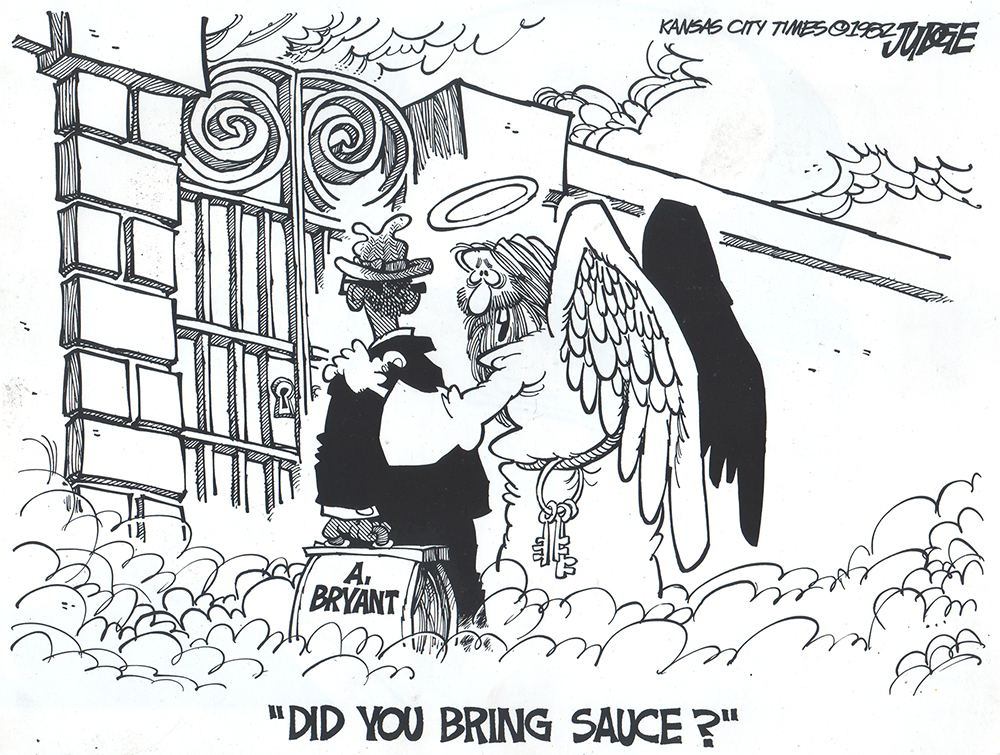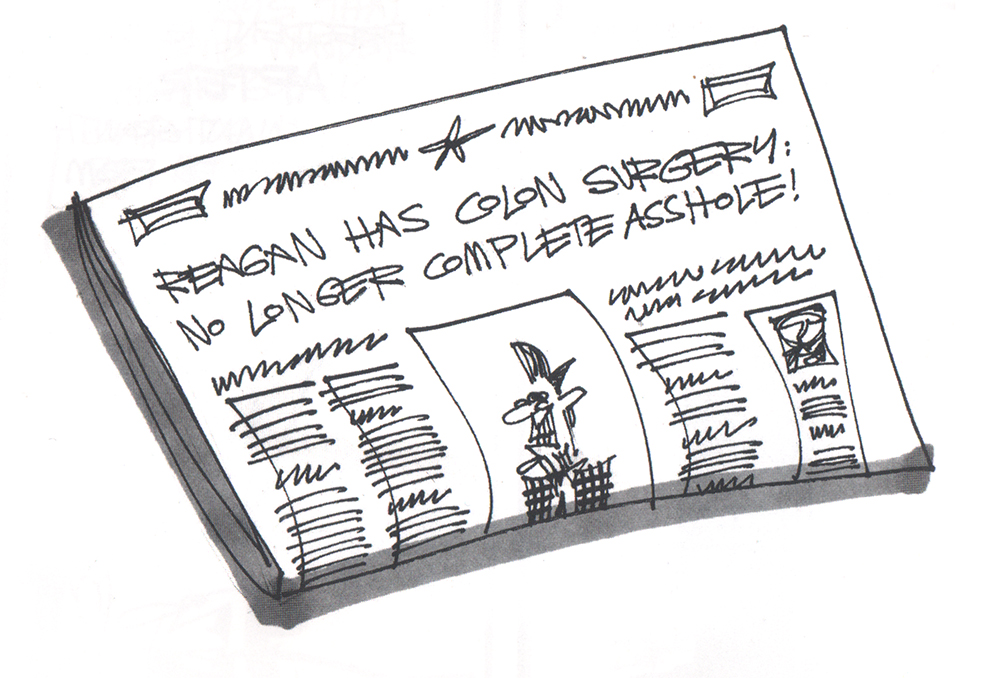
Political cartoonist Lee Judge landed his job at the Kansas City Star on April Fool’s Day of 1981. Foreshadowing? Maybe. For over 35+ years, Judge penned clever drawings with sentiment, snark, and a heartfelt appreciation of all things KC. We caught up with the man, the myth, the cartoon legend to find out what he’s been up to since leaving the newspaper.

M2: What’s your backstory?
LJ: “Originally there were the Star and the Times and I was the political cartoonist for the Times. When they combined, I became the Star’s cartoonist. I left in 2017. [We guess-timated Judge drew over 11,000-ish cartoons during that time.] For every cartoon that people saw, I sketched three. The first thing I learned about editors is that they edit. I quickly learned to give them something to edit. Instead of giving them one cartoon to change or criticize, I gave them three. I would also sandbag them by giving them cartoons they were never going to run—usually because of subject matter. [You can find some of Judge’s rogue cartoons in a book called The Stuff They Wouldn’t Print.] It’s a compilation of my things.
With my publisher, the rule was, ‘You don’t tell me what to draw and I won’t tell you what to print.’ They had the right to veto, but they never told me whatto draw. They never said, ‘we want a cartoon that features this.’ It’s their newspaper—they can print what they want to print.”

M2: How does one become a cartoonist exactly? Enquiring minds want to know.
LJ: “I always drew. Most of the cartoonists I knew had no specific background. There’s no place to go to learn how to do it. You do it by observation. It helps if you read a lot, if you’re interested in politics. And then you get a philosophy about what you’re reading.”

M2: What do you miss about it?
LJ: “I miss my co-workers. I still draw every day. Cartooning is a very solitary profession and it’s not like there’s a room of people doing it. I would get up and walk around and see friends and blow off steam. Drawing it on your kitchen table isn’t exactly the same thing. I’m still syndicated with King Features and my stuff goes out across the country, but I have no idea where.”
M2: The best and worst parts of your cartooning career?
“The best part was getting up and going to do something that I enjoyed every day. And as long as I did it—it never got old. I never said, ‘Eh, I don’t want to draw a cartoon today.’ The worst part? When you thought you had a great idea—and it wouldn’t get published. It was frustrating. But that’s the battle everybody fights. If you don’t own a newspaper, you don’t get to decide what goes up. It’s interesting—times change and tastes change. And there are probably some [cartoons] today that would be okay.”

M2: What are you doing now? I spy you writing a lot about the Royals.
“I’m drawing a cartoon every day and sending them to King Features. And I’m writing a weekly piece for the Royals that will continue this summer. I also have a deal with the Star to write about the Royals.”
M2: When did you become a baseball aficionado? You’ve been writing about the Royals since, like, 2010?
“I, like a lot of people—well, every American male growing up thinks they know baseball. I went to a Royals fantasy camp in 1990 where you pretend to be a big league ballplayer for a week. I realized I knew next to nothing about this sport that I’ve been watching all my life. That got me really interested. I got to talking to players. That gave me a different point of view—like, what was their thought process? For the most part, they were very open about it. I wanted to know—why did you do this or why did you do that?”
M2: Any stories to tell?
“I got hit by a 92-mph pitch. [A recreation of a wayward pitch from a game in 2011.] The players loved it. They thought it was one of the funniest things they’d ever seen—to watch a reporter get whacked. And that changed my status a little bit. Alex Gordon said, ‘After Lee got hit by this pitch, we all knew there wasn’t something quite right with him.’
I had a bruise that ran from here [his ribs] to my spine that was purple and black. It changed colors. Every day the players wanted to see it. Jeff Francoeur got off the elevator one day to show his wife. He wanted his wife to see the bruise. They enjoyed it. The first base coach at the time said, ‘I’m pretty sure you’re bleeding internally now.’ That was helpful to my career, but not to my health.”
M2: And besides writing about the Royals, you’re also writing hilarious stuff about your family and tweeting, yes?
“I’m dredging up my family’s sordid past in my blog. I started putting that on there. My blog was about the Royals. This is my attempt to record [family] history and get some of it down before people forget. It’s been very enlightening and encouraging to see people get that much joy out of it. I’ll keep telling stories as long as I remember them.
When you do a cartoon, you send it out there, you have no idea if someone got it or enjoyed it. It’s like doing a stand-up routine and you’re not in the same room as the audience. I had a friend who kept telling me ‘You gotta write this stuff and write it down because your family is hilarious.’”
Interview condensed and minimally edited for clarity.


